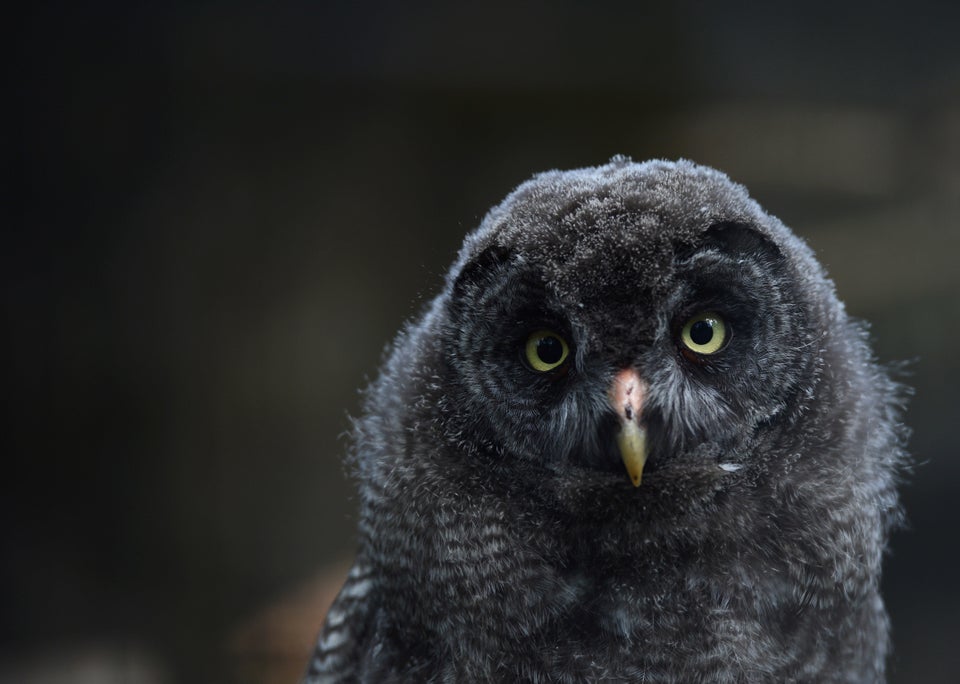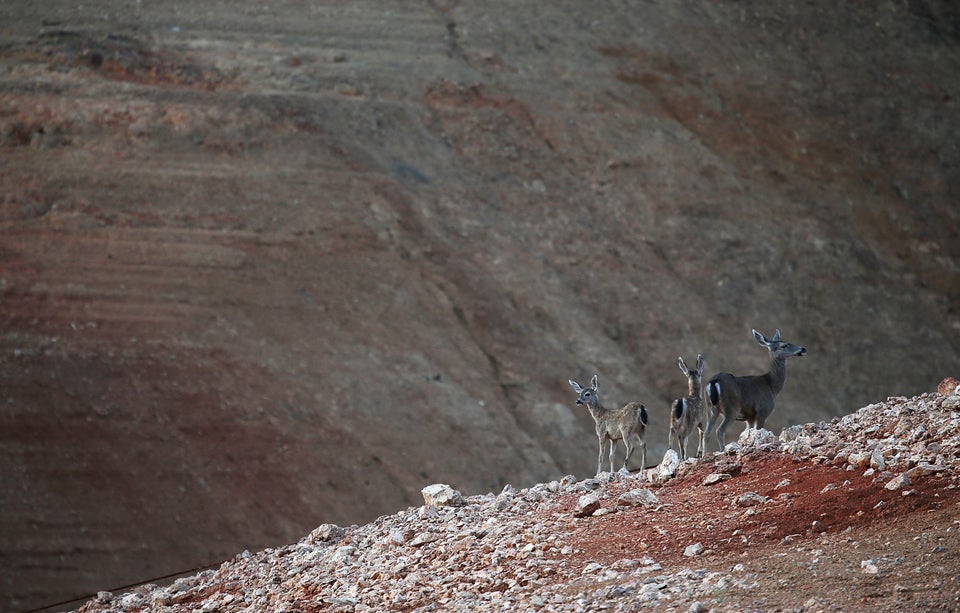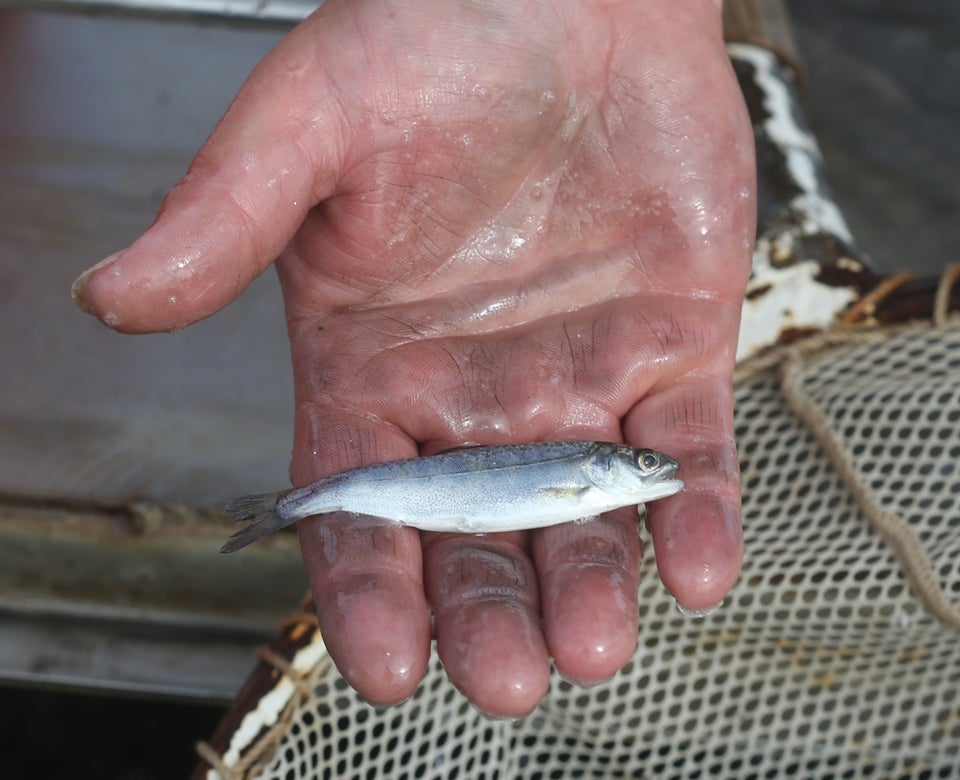This piece comes to us courtesy of Stateline. Stateline is a nonpartisan, nonprofit news service of the Pew Charitable Trusts that provides daily reporting and analysis on trends in state policy.
With all the attention focused on California’s water woes, an observer might conclude that the Golden State’s drought is the exception. It isn’t. Forty states expect to see water shortages in at least some areas in the next decade, according to a government watchdog agency.
In a 2013 survey by the Government Accountability Office (GAO), state water managers from around the country said they expect freshwater shortages to continue into the next decade, even under what they described as “average” conditions. If those conditions change—whether because of rapid population growth, unusually low snowfall or rainfall, or accelerated economic growth—the situation could worsen.
“As far as other states, if they haven’t seen it in the past, it’s something they will see in the future,” said Ben Chou, a water policy analyst in the Los Angeles office of the Natural Resources Defense Council, an environmental group.
Late last month, Democratic California Gov. Jerry Brown implemented mandatory water conservation rules. The rules ban all restaurants, bars and hotels from serving water unless customers ask for it, ban the watering of lawns and landscaping within 48 hours of measurable rain, and require municipalities and private companies to limit lawn watering to two days a week.
The lawn-watering limits are likely to have the most impact, since outdoor irrigation makes up 44 percent of water use in the state’s urban and suburban communities, according to the state water board. The past three years have been the driest three years in California history dating to the 1849 Gold Rush, the board said. Low snowpack, combined with 2014 being the hottest year in history in the state, exacerbated the situation.
Residents of other states should take a lesson from California, Chou said. “Attention on California is due to the size of the state and the fact that we grow about half of the nation’s produce,” he said. “Other states have started looking at it, especially where water supplies are at a premium.”
Montana, for example, was listed in the GAO report as the state most likely to have a statewide water shortage in the next decade. Many other western states are in a similar predicament.
Tim Davis, Montana Water Resources Division administrator, said his department told the GAO that in any given year, any part of the state could have a water shortage. He said that last year, most of the state was fine, but the southwest corner was dry. Entering this irrigation season for farmers, Davis said the southwest region remains dry as is “much more of the state.”
Under direction from the Montana Legislature, Davis said his department has begun to plan for water shortages.
“Drought is one of those disasters that you have to plan for,” he said. “You can’t just immediately go out there and change how you’re using water on the ground or invest in efficiencies unless you have been doing it all along.” He said the state is making plans to share water between communities during times of drought, along with changing field irrigation methods to save water.

Texas ‘Rainy Day’ Fund
Crisis has a way of focusing the mind. Take Texas, for example.
About 36 percent of Texas is experiencing moderate or exceptional drought, according to Dr. Robert Mace, deputy executive administrator of the Texas Water Development Board. That actually represents an improvement. In 2011, 100 percent of the state was experiencing drought, the first time that had happened since the state started keeping records in the 1880s.
The crisis grabbed the attention of Texas lawmakers, and in 2013 they sent a referendum to voters calling for $2 billion of the state’s rainy day fund to be used to leverage $27 billion in bonds to implement a state water conservation plan. The referendum passed with 74 percent of the vote.
Mace said the plan is being implemented as water demands in the state continue to grow. He said the population of Texas is expected to increase by 80 percent in the next 50 years. “We are working with water providers, water managers, to try to plan for enough water in case of a repeat of the ‘drought of record,’” he said. “We are taking a cold, sober look at what the needs (for) water are going to be.”
The plan includes allowing bordering communities to tap water from each other, and state money for emergency well drilling. “The communities that really struggle with drought are the smaller communities,” he said. “(State officials) will go out and make suggestions on how to run their systems more efficiently.”
Money Troubles
In Kansas, drought conditions also are a little better this year. Last year, 93 percent of Kansas was facing severe drought, according to the U.S. Drought Monitor, but this year things have improved slightly, according to Tracy Streeter, director of the Kansas Water Office. The improvement is mostly due to more rainfall, which varies so much from year to year the state is forced to plan for the worst. The worst recorded drought was in 1952-57. “We try to benchmark to that point,” Streeter said.
In a report to Republican Gov. Sam Brownback completed in January, the water office, along with other agencies and citizen groups, painted a bleak picture. The report notes that the Ogallala Aquifer is declining faster than it is recharging, and that reservoirs are filling with sediment. If nothing changes in the next 50 years, the report predicted, the Ogallala will be 70 percent depleted and the state’s reservoirs will be 40 percent filled with sediment.
The group called for the creation of a water resources subcabinet to advise the governor and a task force to develop financing for water resource management, including alternatives that utilize public-private partnerships.
Streeter said the subcabinet has been created and will have its first meeting soon. But Kansas’ struggle to fill an estimated $340 million budget gap has stalled progress on the task force recommendation that the state find money to implement water conservation plans.
East Not Immune
While water problems are worst in the West, the East is not immune. According to the GAO report, North Carolina and Delaware are the eastern states most likely to experience regional water shortages in the next decade.
Kansas’ Streeter says more states in the East are asking for his advice as they prepare for a future with less water. “Drought is insidious, it doesn’t land on you overnight, it creeps up on you,” Streeter said. “Agriculture feels it first—you can start having crop failures within weeks of having no rain. Everybody else takes months.”
According to the U.S. Drought Monitor, the western part of North Carolina is already “abnormally dry,” though it doesn’t yet meet the “drought” definition. Sarah Young, a spokeswoman for the North Carolina Department of Environment and Natural Resources, said state officials talk with the federal drought monitoring agency every week to assess the situation in the state.
It has been several years since North Carolina experienced drought conditions, but in 2007 and 2008, it suffered the worst drought in its history. That prompted a state law expanding the powers of the governor and local officials to respond. The law also encourages conservation and cooperation among communities. North Carolina is experiencing population growth and changing weather patterns that “leave us vulnerable to more serious droughts in the future,” according to the state water plan.
Before You Go

Zoologist and environmental consultant Peter Bloom warned that while this pair's particular case may not be the direct result of the drought, it is a grim reflection of how many suffering raptors are struggling to reproduce in dry conditions.
Starr Ranch manager Peter DeSimone told the magazine that several of the 11 raptor species in the sanctuary have not been nesting on the land and are nowhere to be seen -- likely because of dwindling prey populations, such as mice, that rely on grass and plants that haven’t grown in the dry conditions.
Researchers and animal caretakers across the state have hypothesized similarly and agreed that the states of the species are unprecedented.
“They’re skinny, they’re weak and they’re just not doing well,” veterinarian Kristi Krause of Lakeforest’s Serrano Animal and Bird Hospital told the Orange County Register. “This is probably the worst I’ve seen it.”
Devastating wildfires linked to the dry conditions have also ravaged some habitats. Last month, Al Jazeera America reported that rangers in Yosemite National Park are investigating how great gray owl habitats were impacted by the Rim fire, the third largest in California history.
“We are not detecting great gray owls at as many sites as before the fire,” park ornithologist Sarah Stock told Al Jazeera, adding that 20 percent of the species’ nesting habitat burned in the fire. While great gray owls nest in tree snags -- a tree that is dead or dying but still standing -- the Rim fire incinerated most trees beyond habitation.
“With predictions of more frequent, hotter fires, it means that great gray owls might not be able to come back to these areas under the present climate scenario,” Stock said.

“There is not as much food to forage on, so they are coming down lower,” animal control officer Terri Koeckritz told the station. “That means they are crossing more unfamiliar roads and encountering more cars.”
In recent years, California’s deer population has dropped to just half a million, one-fourth of what it was in the 1960s, Al Jazeera America reported in February. Their dwindling numbers can be blamed greatly on habitat loss and, to a lesser extent, hunting. The drought has only exacerbated the problem, forcing deer into dangerously close quarters.
“Such activity during a severe drought can concentrate these animals and help spread parasites and disease,” Jason Holley, a wildlife biologist supervisor for the California Department of Fish and Wildlife, told Al Jazeera. “It can also attract predators, such as mountain lions.”

“[Water] deliveries were reduced not just to farmers, but to state and federal refuges,” Greg Yarris of the U.S. Fish and Wildlife Service told Audubon Magazine. “When you have reduced wetland, there is a reduced breeding success," he said of the state’s mallard populations, which frequently make the state their home throughout every season.
Additionally, the forced concentration of mallards and other waterfowl on remaining water sources has made those sites a hotbed for disease. The CDFW’s Wildlife Investigations Lab reported in February that it had already investigated several avian cholera outbreaks that winter.
“Close contact among waterfowl allows a bacterial disease like avian cholera to spread very rapidly, resulting in the death of hundreds to thousands of birds,” CDFW scientific aid Tom Batter wrote.

“In a drought year like this, fish are going to die,” Gary Curtis, a Senior Environmental Scientist for the CDFW, told ABC News last month while working on the Scott River. “We can’t have thousands and millions of dead fish washed up on the streams. We just can’t.”
With shallow water heating up to dangerously high levels, salmon swimming upstream were trapped and forced to lay their eggs in water inhospitable to newborns.
The salmon devastation has become a tense political issue in some communities. Along the Klamath River, where salmon are already experiencing a gill rot disease that rattled the population in 2002, Native American tribes have begged officials to release cold water from the federally managed Trinity Lake reservoir upstream, National Public Radio reported last month. The water could save the migrating salmon, but officials have already promised that water to farmers hundreds of miles away growing almonds.